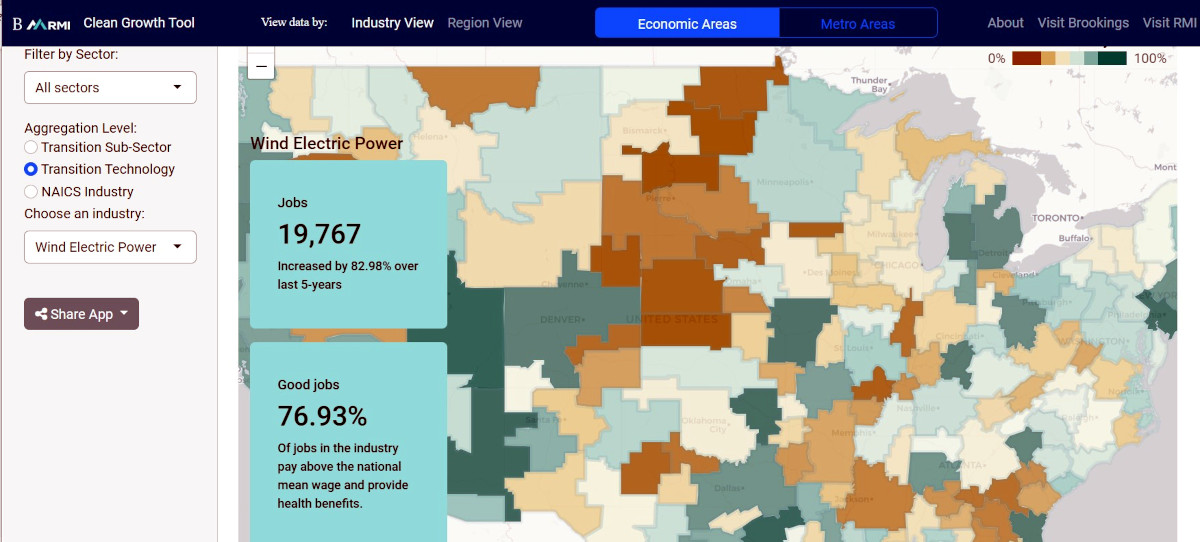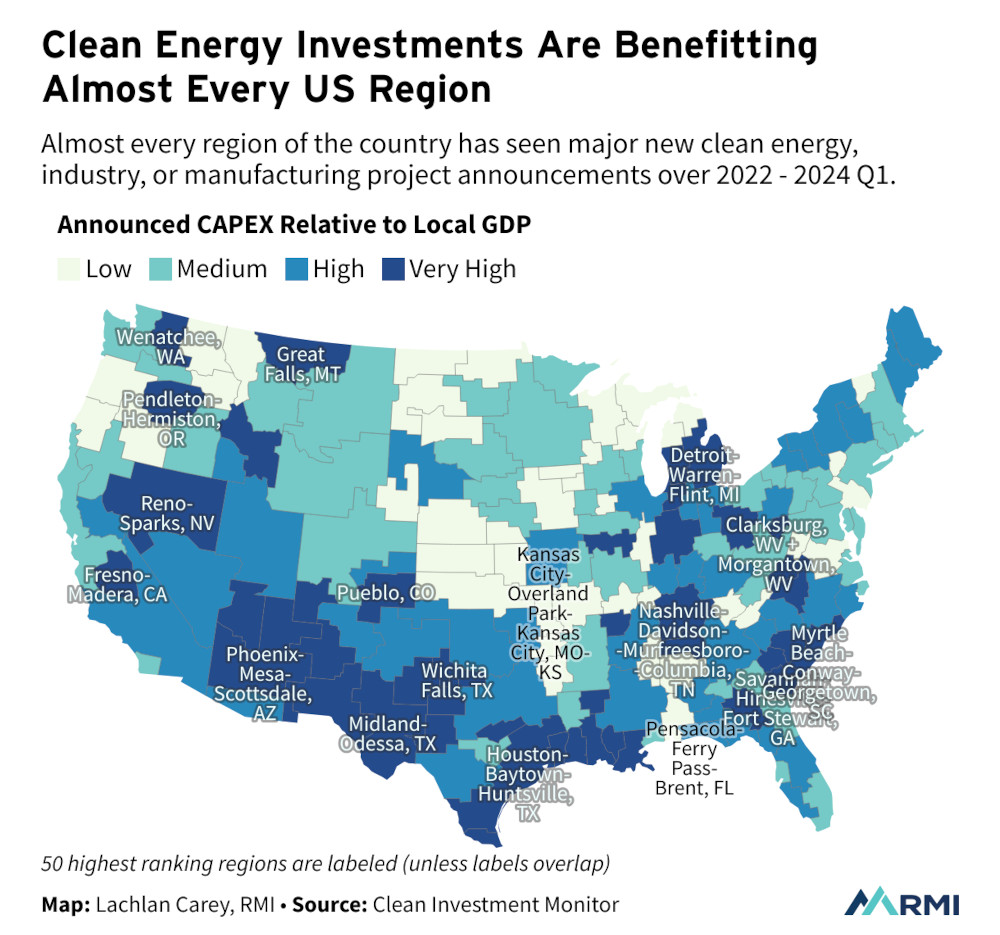Nonprofit climate and cleantech research institute RMI
(founded as Rocky Mountain Institute) has launched the Clean Growth
Tool — a new analytical and data platform
that identifies the states, cities and regions where clean-energy industries are
most likely to thrive in the United States, given their existing workforce
strengths and related economic capabilities.
For example, RMI data from the Clean Growth Tool reveals that key regions in
Arizona, Georgia, Illinois, Michigan and North Carolina —
states that have attracted significant cleantech investment in the wake of the
Inflation Reduction
Act
(IRA) — are well-positioned to extend their industrial leadership in
manufacturing solar
components,
batteries
and electric
vehicles;
as well as the extraordinary potential that states including Idaho,
Kentucky, Minnesota, Ohio, Pennsylvania, Texas and Utah
have in these same and related critical industries.
The Clean Growth Tool builds on economic methods introduced
at
the Harvard University Center for International Development and workforce
development
research
at the Brookings Institution. It covers sectors, technologie, and industries
associated with all stages of energy transition and clean-energy supply chains.
It offers two geographic filters — metropolitan statistical area (MSA),
which includes cities and their immediate surroundings; and economic area
(EA), which
covers both urban and rural areas.
 Image credit: RMI
Image credit: RMI
The Tool provides insights on the potential for development and manufacturing of
low-carbon solutions related to industries ranging from energy tech,
agricultural health and waste management to building & construction, vehicles,
metals and minerals, forestry, chemistry and more. It covers all 50 states —
providing policymakers and investors with the data they need to pursue the most
promising opportunities, and strengthen both local prosperity and US
competitiveness amid the accelerating global energy transition.
The launch of the tool comes on the heels of a survey conducted by the
Michigan Economic Development Corporation that shows the US public has a
clear
appetite
for the adoption of new, clean technologies — as well as business incentives,
training opportunities and robust career pathways to support this growing
economy.
“Cities and states need to know where it makes sense to invest to be most
competitive amid the global clean energy manufacturing boom,” said RMI senior
principal Aaron
Brickman.
“We’re giving policymakers and investors the workforce and industry data they
need to unleash their full potential, spur innovation, boost productivity and
create new export opportunities. America can successfully compete in the
manufacturing of not only emerging technologies like clean steel, but also
widely deployed ones like solar. Economic competitiveness is key to sustained
job growth in cleantech manufacturing, and we hone our competitive edge by
steering the right investments to the right places.”
As RMI points out in a
post,
the growth of clean-energy investment in the US in the wake of the IRA has been
unprecedented. Hydrogen projects and battery and solar manufacturing are growing
especially quickly, thanks to a coordinated “green industrial
strategy”
that offers powerful investment subsidies, local content requirements and
low-cost financing to domestic producers.
 Image credit:
RMI
Image credit:
RMI
Already, these investments are reaching almost every region of the country:
Whether it’s the “battery belt” extending from Michigan to Alabama, hydrogen
investments along the Gulf Coast, electric vehicles (EVs) and solar manufacturing
in the Southeast, or sustainable fuels in corn
country,
the energy transition is already fueling growth and opportunities nationwide.
Data source inputs for the Clean Growth Tool include the Clean Investment
Monitor (MIT/Rhodium), Smart
Growth Cities, the American
Community Survey,
Lightcast and the Green Transition
Navigator (LSE).
RMI will continue to update the Clean Growth Tool as new industrial,
technological, investment and policy information becomes available.
Get the latest insights, trends, and innovations to help position yourself at the forefront of sustainable business leadership—delivered straight to your inbox.
Sustainable Brands Staff
Published Aug 6, 2024 2pm EDT / 11am PDT / 7pm BST / 8pm CEST